Tonight is our first *official* night on the telescope schedule, as last night was originally scheduled as an MMTO M&E night (maintenance and engineering) that the telescope ended up not needing more than we did, so they let us have an extra night to focus on our alignment. Thank you MMTO!
Craig and Dan came back up to help out at the start of the night with PISCES and the Top Box, respectively. Craig trained ASU grad student Krishna and me on PISCES operations including filling the dewar to keep it at a chilly 77 Kelvin. Fun fact: PISCES has been on 4 professional telescopes on several mountains around southern Arizona!
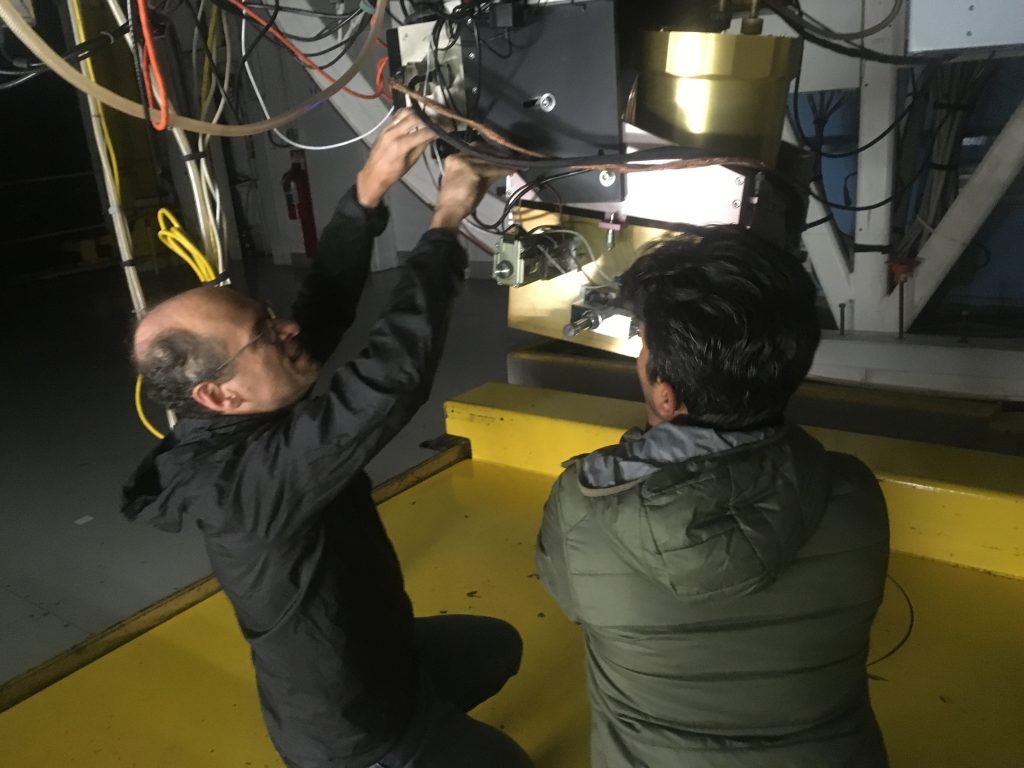
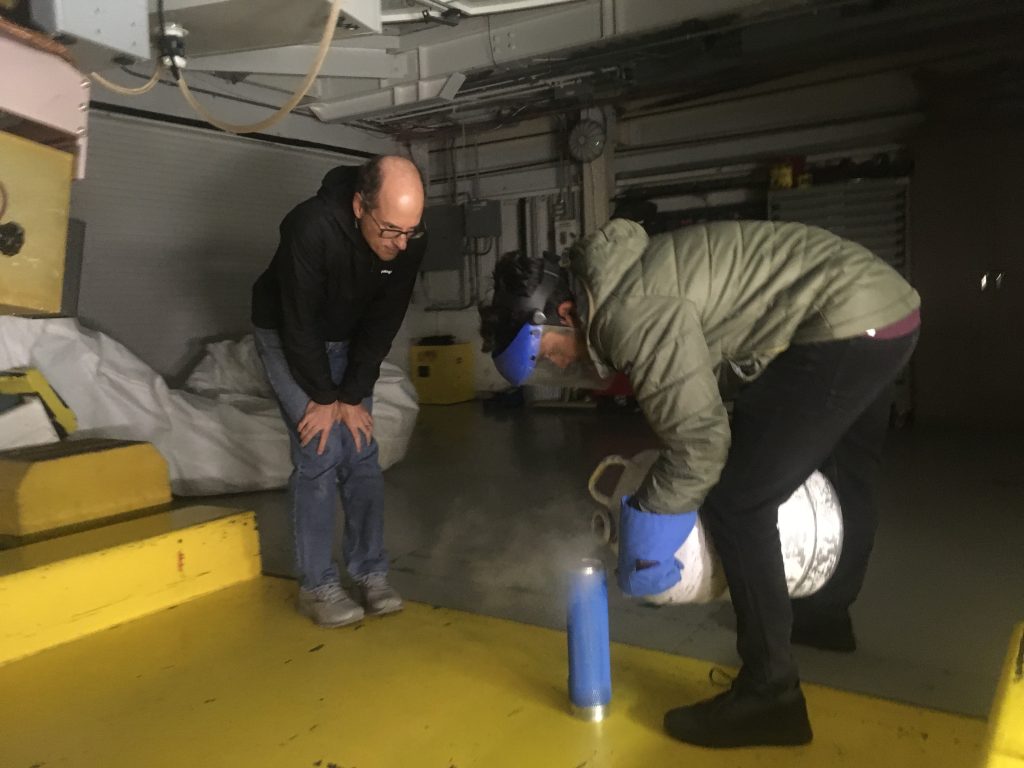
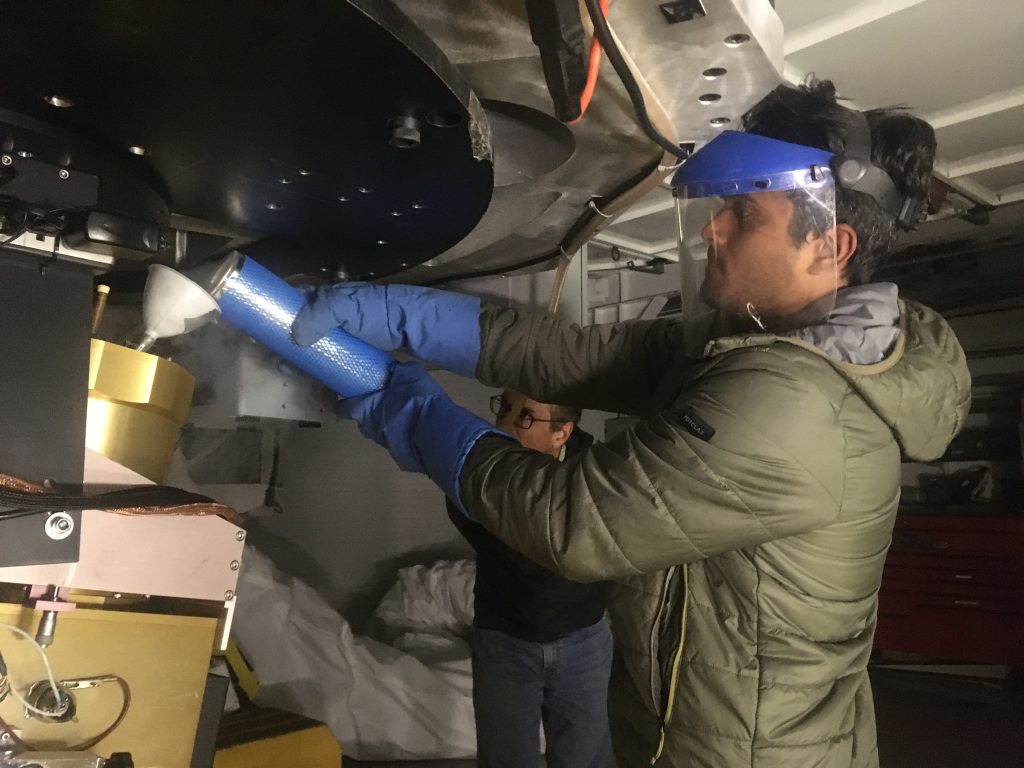
[Image description: Three photos showing two astronomers adjusting the instrument PISCES mounted to the telescope, and filling it with liquid nitrogen.]
Unfortunately we had to close the dome because of high winds around midnight.
Luckily the software crew were able to continue debugging by our old MagAO trick of closing the loop with tiny gains on WFS noise!
So I thought I would take some time tonight to lay out all the different systems we are controlling on this run, and the operating stations. Our T.O. Ben took for this great pic at sunset: He is standing outside the dome on the ground and the telescope is tipped over looking at horizon and we are all standing on the dome floor near the dome slit. You can see some of the primary mirror (the big glass behind us) and the back of the ASM and its structure.

First we have the big picture of our AO system on the telescope. The ASM is at the top, suspended far above the primary mirror. The Top Box (labelled W-unit here) is mounted directly beneath the primary mirror, and PISCES (labelled ARIES/MMTPol here, because any of our science cameras will go in this spot) is mounted just below the Top Box. The ASM power supply and the AO reconstructor computers are off telescope in the equipment room.
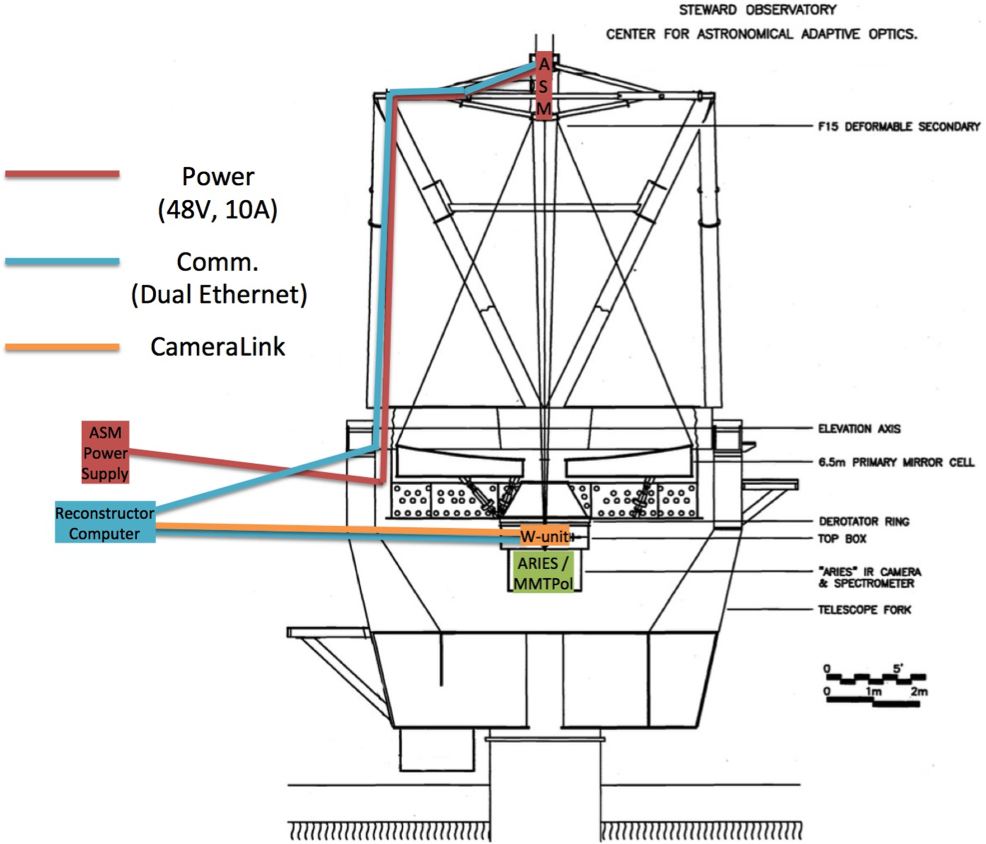
Let’s follow a wavefront as it enters the MMT. The first surface it encounters is the primary mirror which is controlled by the telescope operator (this week we have the pleasure of working with Ben):
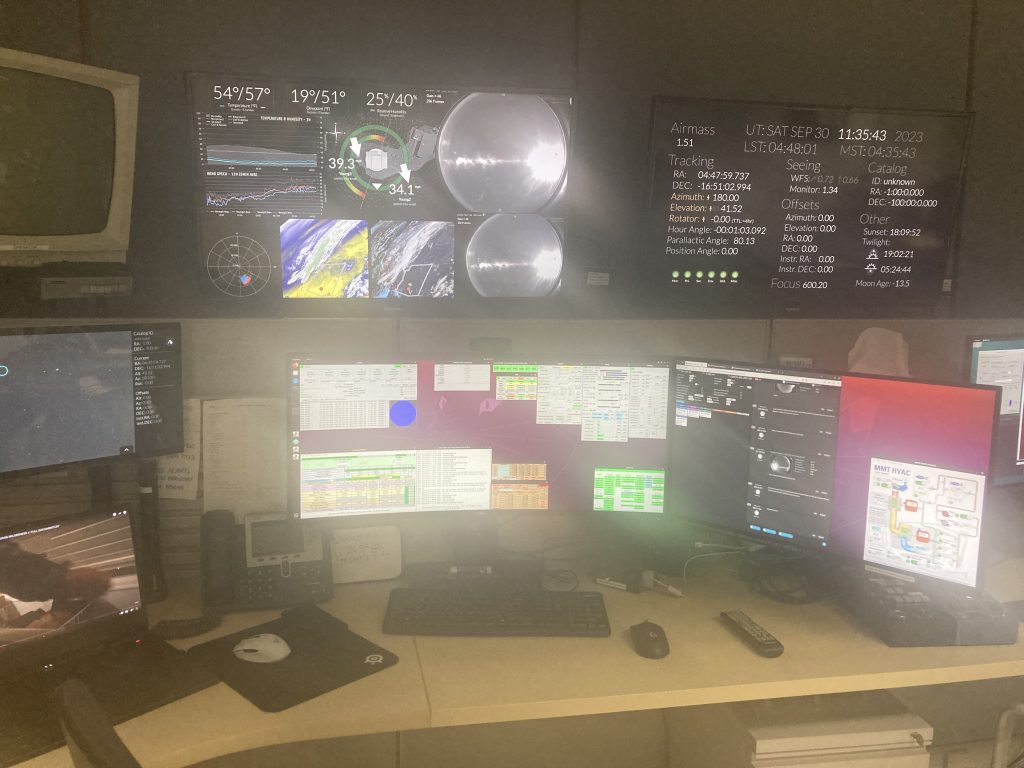
After the primary mirror it goes to the secondary mirror. The ASM is currently operated by Jess and/or Amali who use the original engineering gui written by Elwood to control the coil currents, monitor the temperatures, and apply their best lab flat:
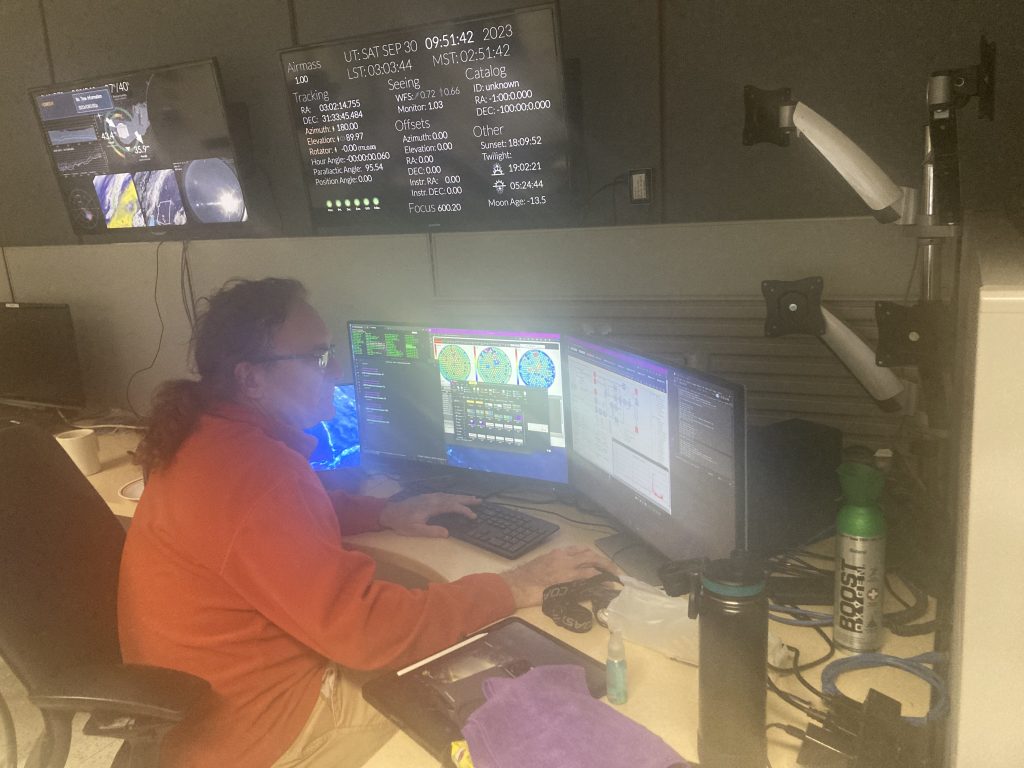
Next let’s look at the Top Box. Here is its layout: After our wavefront encounters our secondary mirror, it goes through the primary’s central hole to the dichroic just above PISCES, and the bluer portion is passed by the dichroic in reflection onto the optical breadboard in the Top Box. Then it travels (in this picture starting from the left) through the periscope (Oli’s elegant design to give us nodding without the heavy Bayside Stages used for this purpose in LBTI and MagAO). Along this beampath we have the option to insert a calibration laser source used for pupil illumination tests. Next comes the input triplet lens and ADC (atmospheric dispersion compensator). Along this beampath some of the light is sent to the acquisition (ACQ) camera (a Basler) with a selectable beamsplitter wheel. Next are the fast-steering mirror (FSM) that we use to modulate the beam (modulator) and K-mirror (which adjusts for the parallactic angle), then we have a flip mirror which gives the option of either the visible-wavelength wavefront sensor (WFS) or the infrared WFS. Just before this flip mirror is a fairly new addition, a pupil imaging lens (with Lyot stop placed just before the FSM) can be inserted here and a pellicle to a ZWO camera to image the pupil. On this run we are primarily focusing on the visible WFS, the acquistion camera, and the pupil imager.
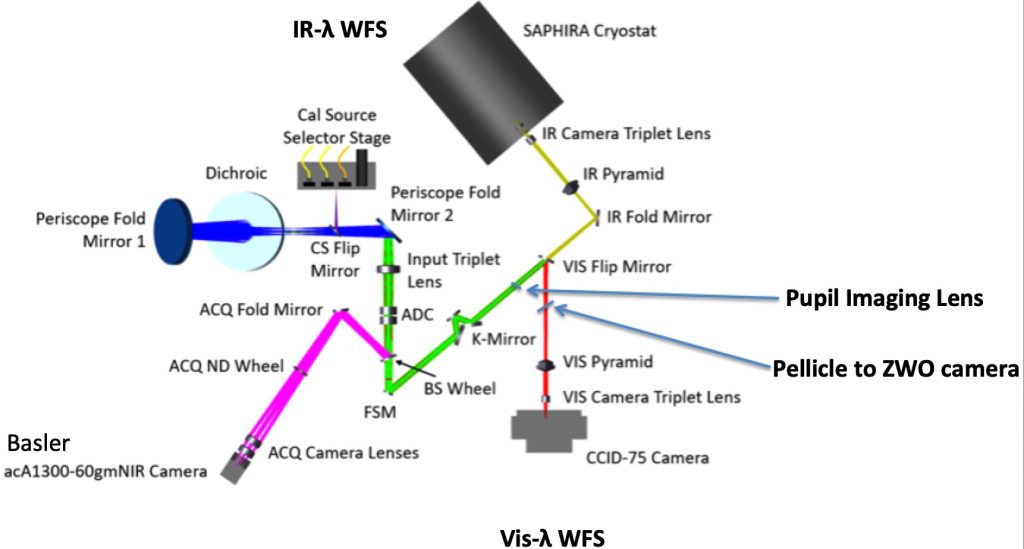
Here is a pupil image Grant took last night with the ZWO camera in pupil imaging mode as the dome was closing, to help Oli size the Lyot stop correctly: The bright ring is the sky, the circular shadow is the secondary, supported by the spiders in black, and the white rectangle in the center is the last bit of the primary mirror that can see the dawn sky as the dome was closing.

The Top Box is currently operated as follows. During initial alignment at the start of the run, a lot of optics must be adjusted manually (often by Oli; this run it was by Grant and Dan). Next we have the movement of remotely-adjustable motors, from filter wheels and the periscope to the modulator (FSM) speed and amplitude. While we have a gui design in progress, these are currently being operated using the original engineering guis of each of the individual COTS components, here is their control station:
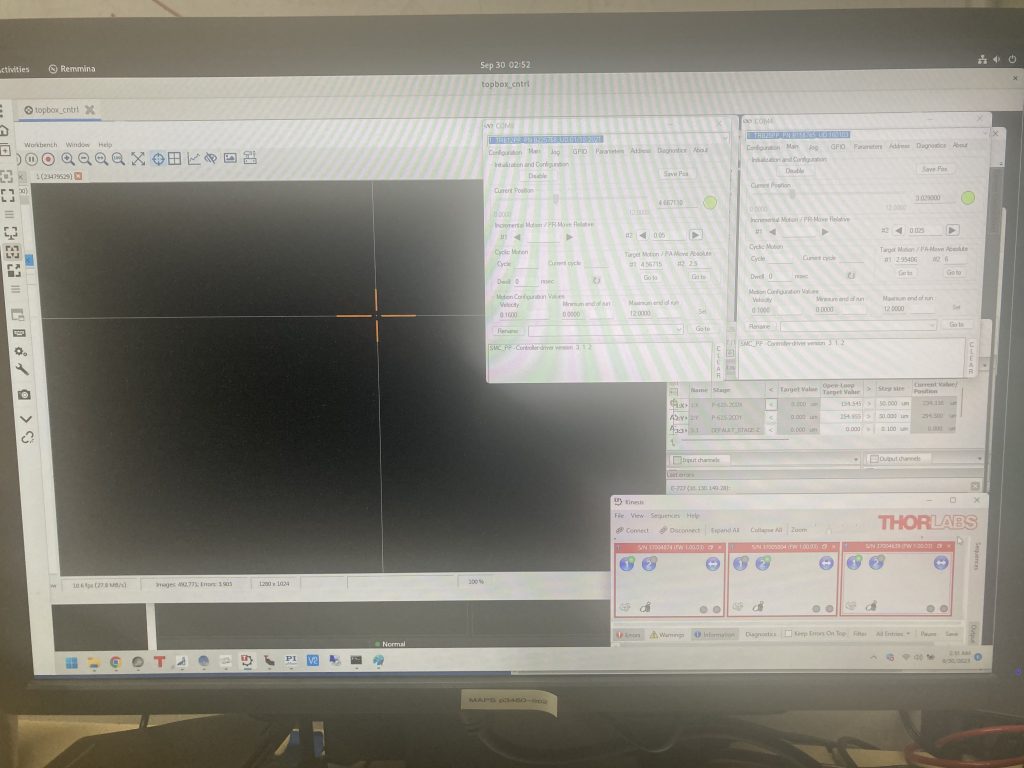
The WFS in the Top Box and the ASM above the telescope work together in a closed feedback loop to flatten the wavefront. This is controlled by the AO software CACAO and CHAI currently being written and operated by Andrew, Amali, Eden, Jared, Olivier, Jacob, and Robin. Here are Amali and Andrew closing the loop on WFS noise when the dome is closed due to high winds:
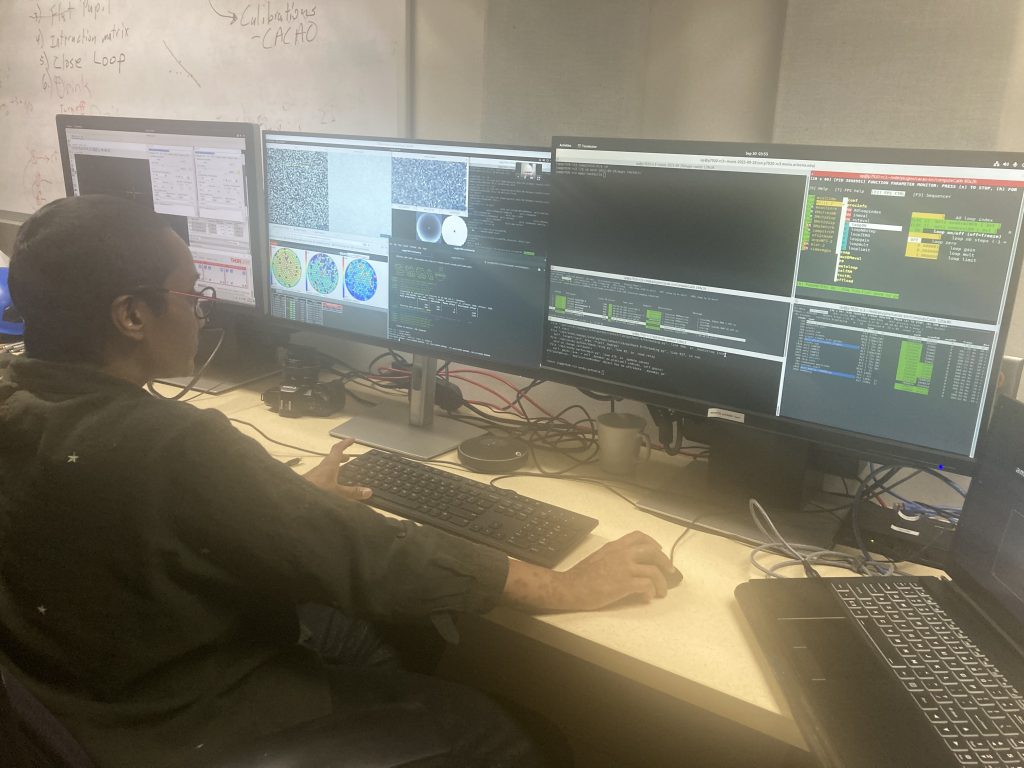
Now consider the redder portion of our wavefront. That passed through the dichroic in transmission and went into our science camera PISCES. The PISCES optical path inside the dewar has two cameras (narrow-field 26” f/23 and wide-field 100” f/5), a filter wheel (JHKs and narrow bands 1.113um, H2 2.122um, Br-g 2.166um, FeII 1.64u, and 1.2um), and a Hawaii-1 chip.
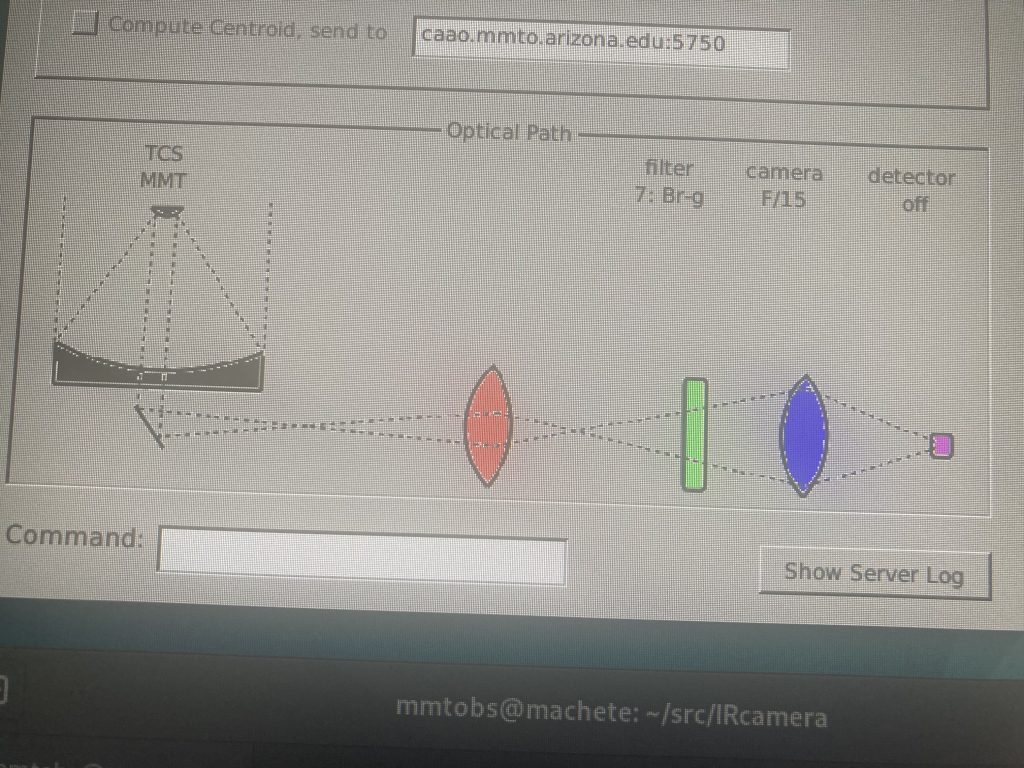
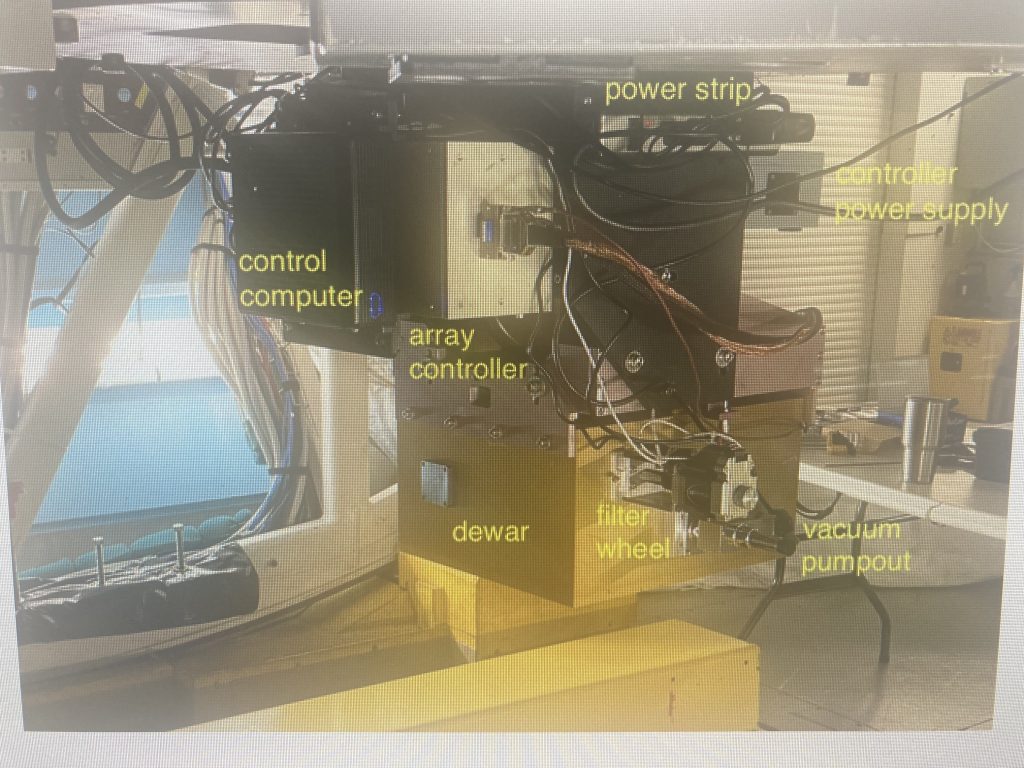
[Image description: On the left is a line drawing of the optical diagram of PISCES. On the right is a photo of PISCES mounted to the telescope, which is labeled with PISCES’ components.]
PISCES is operated from our fifth and final computer station in the control room:
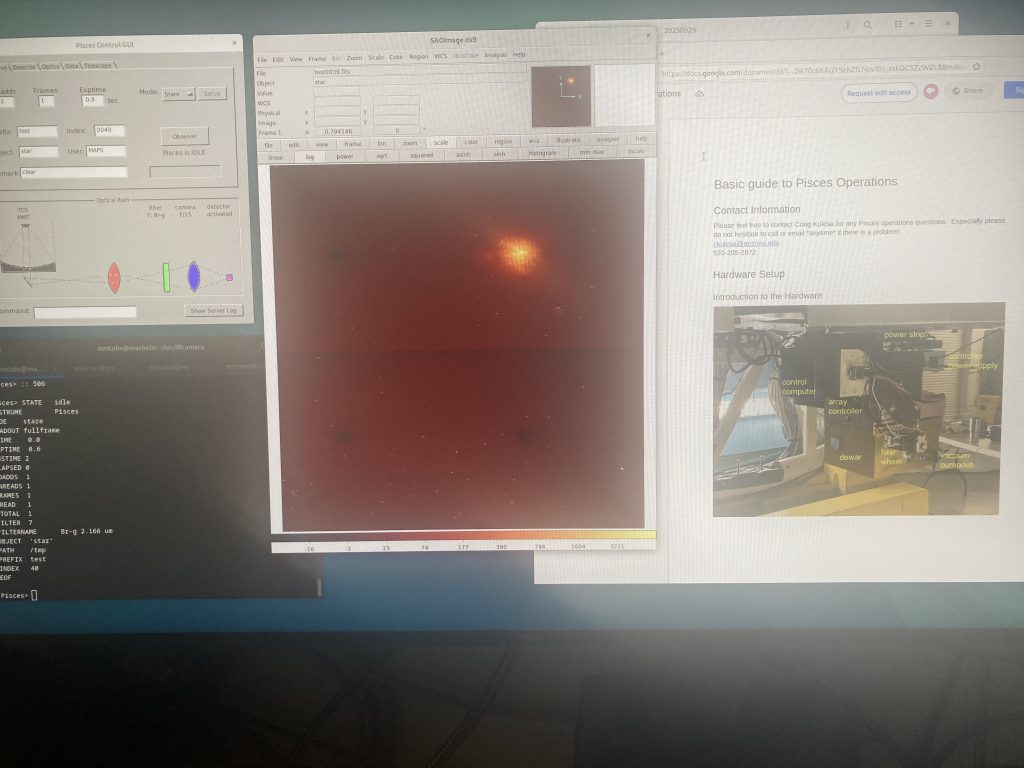
It’s 5am (about an hour before dawn) and looking at the weather, we don’t think the wind will clear up in the next hour, so we’re going to bed early. The song of the day is Chilly Winds by the Kingston Trio:
[Media description: Folk group “The Kingston Trio” sings “Chilly Winds” on a stage in the early 60s.]